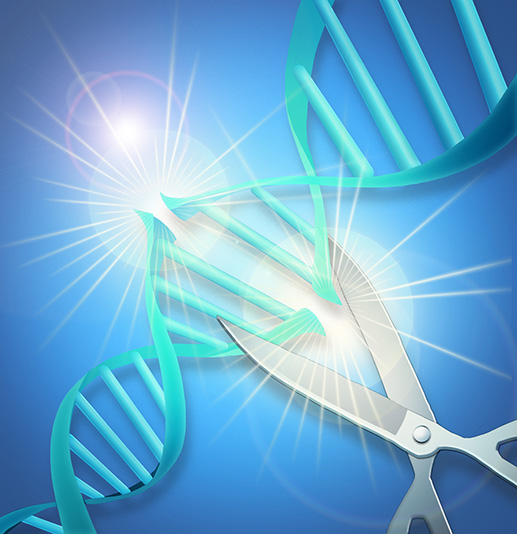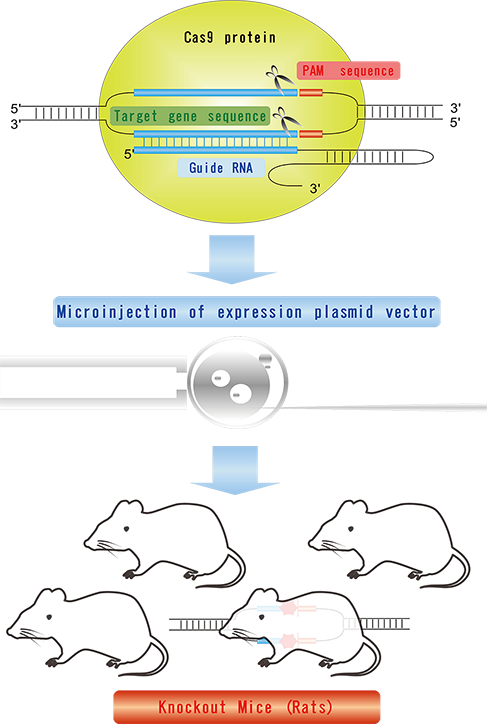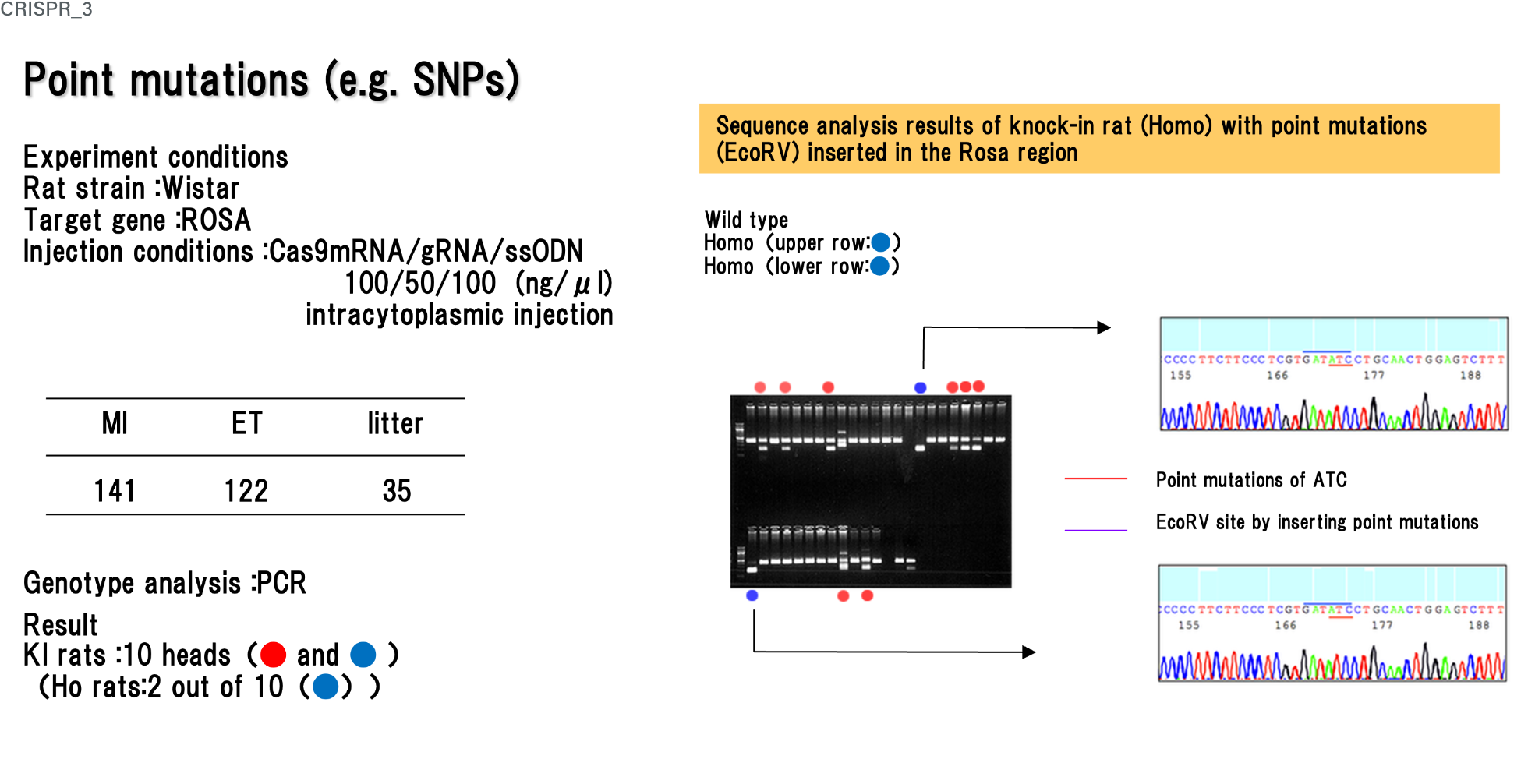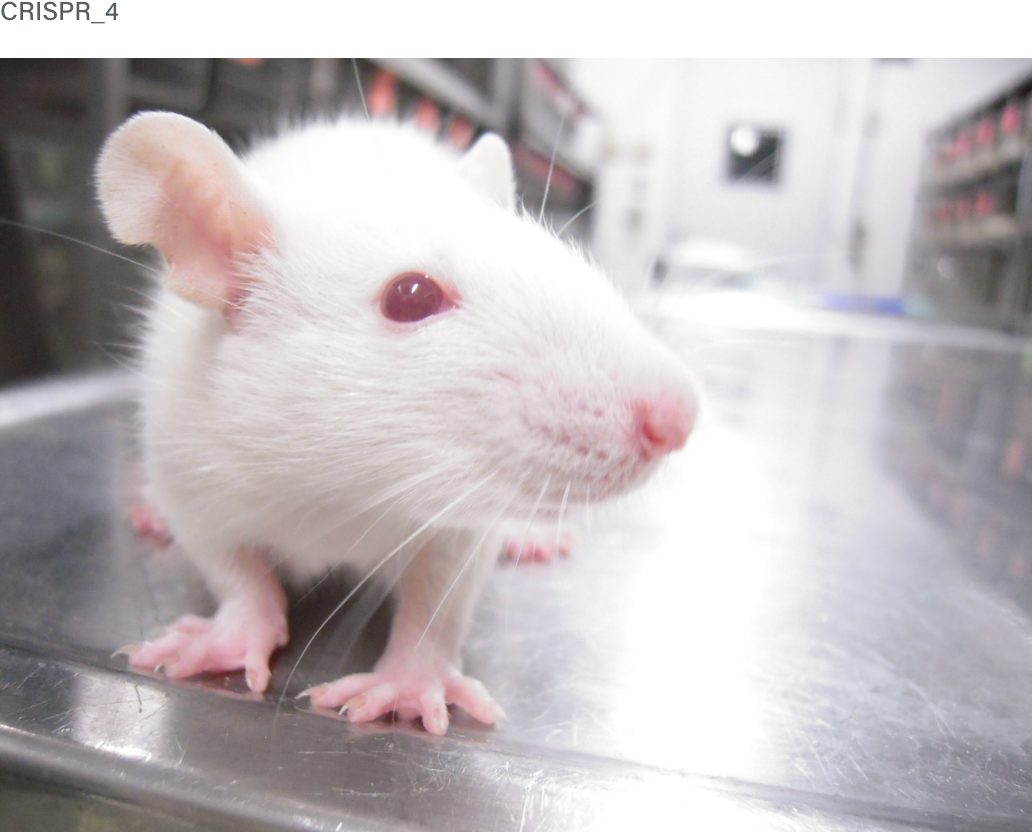What is the CRISPR-Cas9 system?

CRISPR is a genome editing technology utilizing a procaryotic acquired immunity mechanism. Any genomic sequences can be cleaved by combination of Cas9 nuclease and guide RNA (gRNA) that specifically binds to the sequence of the target gene. By using this genome editing technique, we have successfully generated frameshift mutations and point mutations of the target genes in fertilized animal eggs. This is becoming to attract a lot of attentions as a new genome editing technique.
We have acquired a license to use CRISPR/Cas9 system for Animal Genome Editing from Broad Institute (Mas, USA) since 2015.
Advantages of CRISPR-Cas9 system
- The design of guide RNA is so flexible to create a variety type of mutation.
- CRISPR-mediated animal genome editing takes a shorter time and a lower money than authentic gene targeting.
- You can “knockin” short sequences such as point mutations and epitope tag to an animal genome.
- You can also create knockout and knockin rats, which were hardly produced previously.
- It is also possible to edit a genome of certain cell lines.
How to edit animal genome by CRISPR-Cas9 system
CRISPR_2

- Give us your plasmid vector which express both Cas9 gene and guide RNA(s) in a fertilized egg.
- We will microinject your plasmid vector carefully into fertilized eggs and transplant them to pseudopregnant host animals.
- We will bring up the pups born from injected eggs with great care, and take a tail-tip samples by biopsy after weaning.
- Mutant founder individuals (one and more) are selected by Surveyor nuclease assay and delivered to your lab.
- (Option) We will confirm the genomic mutation of founders by direct sequencing or subcloning.
- (Option) The offsprings of mutation-confirmed founders will be bred in our facility and delivered to your laboratory for your bioassay.

How to use it
In addition, you can easily obtain a gene-humanized model mice (rats) by crossing your CRISPR-mediated knockout mice (rats) with the semi-knockin mice (rats) with a full length of the human gene coding region.

